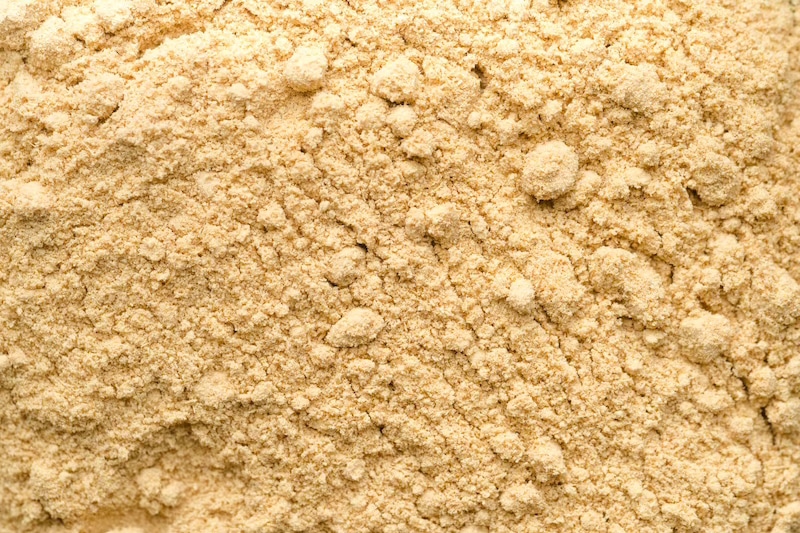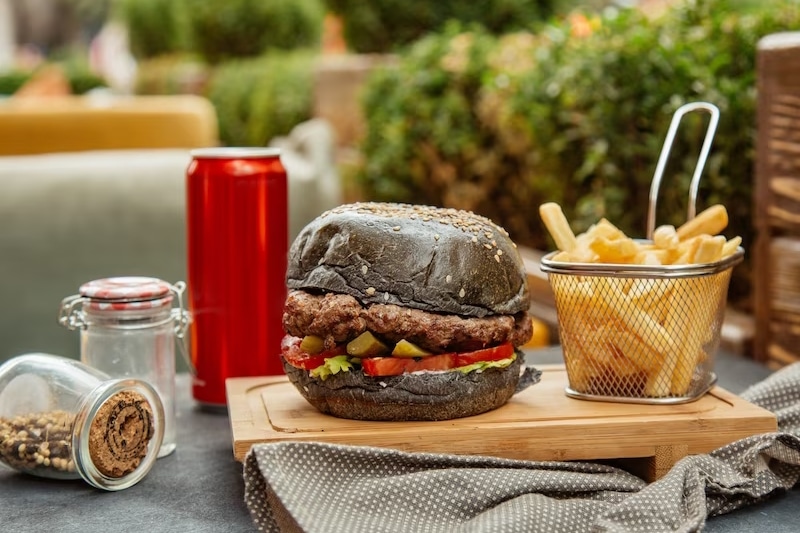Cattle have been a staple of the human diet for quite some time, as evidenced by prehistoric cave paintings. During that time, aurochs—an extinct ox species that is today considered the wild ancestor of modern cattle—were the primary domesticated herd animals. The demand for beef remains high in modern society. According to studies, the typical American consumes roughly sixty beef burgers a year.
Yet, there is a major issue with eating so much beef. To begin, it necessitates the slaughter of millions of cows, the most majority of which are bred in industrialized factory farms. Second, it has serious environmental consequences. Cancel the idea. That’s terrible news for the earth. Methane, a greenhouse gas produced when cows burp, has more than 80 times the warming potential of carbon dioxide for the first 20 years it’s in the atmosphere. One cow produces about 220 pounds of methane throughout the course of its lifetime.
Thus plant-based innovators had to find a way to meet customer demand for beef. For a long time, soy protein was the go-to for creating meat substitutes. Yet, several companies, like Beyond Meat, a major player in the vegan market, are starting to focus on the lowly pea. Here’s why plant-based alternatives like pea protein are better for the planet than their animal counterparts. We also know everything there is to know about its many applications (it’s not just fantastic for vegan meat, it’s also being used in vegan dairy products) and nutritional profile.
Pea protein is a plant-based protein that is extracted from yellow peas, also known as Pisum sativum. It has become increasingly popular among vegans, vegetarians, and individuals who are looking for a high-quality protein alternative. Pea protein is a versatile ingredient that can be used in various applications, including protein powders, protein bars, and other foods and beverages.

What Actually Is Pea Protein?
Pea protein is derived from yellow peas, which are a type of legume that is widely grown for human consumption. The peas are dried and ground into a fine powder, which is then processed to extract the protein. The resulting product is a highly concentrated protein powder that is rich in essential amino acids, the building blocks of protein that our bodies need to function properly.
Pea protein is a complete protein, which means it contains all nine essential amino acids that our bodies cannot produce on their own. These amino acids are crucial for building and repairing muscle tissue, supporting immune function, and maintaining overall health.

Pea Protein Nutrition
Pea protein is a highly nutritious ingredient that provides numerous health benefits. Here are some of the key nutritional facts about pea protein:
High in protein: Pea protein is one of the most protein-dense plant-based proteins available. A single serving can contain up to 25 grams of protein, which is comparable to whey protein and other animal-based proteins.
Low in fat: Pea protein is naturally low in fat, making it an excellent choice for individuals who are trying to manage their weight or reduce their fat intake.
Low in carbs: Pea protein is also low in carbohydrates, which is beneficial for individuals who are following a low-carb or ketogenic diet.
Rich in essential amino acids: As mentioned, pea protein is a complete protein that contains all nine essential amino acids that our bodies need to function properly.
Contains iron: Pea protein is a good source of iron, a mineral that is essential for the production of red blood cells and the transport of oxygen throughout the body.
High in fiber: Pea protein is rich in fiber, which can help promote digestive health and reduce the risk of chronic diseases such as heart disease and diabetes.
Pea Protein Against Meat
Pea protein is not necessarily healthier than meat as both can be part of a healthy and balanced diet. However, there are some reasons why pea protein may be considered a healthier option for some individuals:
Lower in Fat: Pea protein is lower in fat than meat, particularly saturated fat, which can contribute to heart disease and other health issues when consumed in excess. Lower fat intake can also help with weight management and reducing the risk of chronic diseases.
Higher in Fiber: Pea protein is higher in fiber than meat, which is important for digestive health and can help with weight management and reducing the risk of chronic diseases such as type 2 diabetes and heart disease.
Plant-Based: Pea protein is a plant-based protein source, which can be beneficial for individuals who are looking to reduce their meat intake for ethical, environmental, or health reasons. Plant-based diets have been associated with lower rates of chronic diseases and improved overall health.
Low Allergenic Potential: Pea protein is hypoallergenic and is not associated with common food allergies or intolerances such as lactose intolerance or gluten sensitivity. This makes pea protein a good option for individuals with dietary restrictions or sensitivities.
Sustainable: Pea protein is a more sustainable protein source than meat, as it requires less land, water, and resources to produce. Meat production is associated with environmental issues such as deforestation, greenhouse gas emissions, and water pollution, while pea protein production has a lower environmental impact.
While pea protein has some health benefits compared to meat, it is important to note that meat can also be a part of a healthy and balanced diet, especially if it is lean and consumed in moderation. The choice between pea protein and meat will depend on individual preferences, dietary restrictions, and nutritional needs.
Pea Protein Taste
ea protein has a slightly nutty and earthy taste, which can be mildly unpleasant to some people. However, there are several ways to improve the taste of pea protein and make it more palatable.
One of the simplest ways to improve the taste of pea protein is to mix it with other ingredients. Pea protein blends well with fruits, vegetables, and other protein sources, such as whey or soy protein. Adding natural sweeteners like honey, agave nectar, or maple syrup can also improve the taste of pea protein.
Another way to improve the taste of pea protein is to choose flavored varieties. Many pea protein powders are available in flavors such as chocolate, vanilla, and strawberry. These flavored powders can be mixed with water or milk to create a delicious and satisfying protein shake.
Some individuals prefer to use pea protein in cooking and baking. Pea protein can be added to smoothies, pancakes, muffins, and other baked goods to increase their protein content. When used in cooking, the earthy flavor of pea protein blends well with savory dishes like soups and stews.
It is worth noting that the taste of pea protein can vary depending on the brand and the processing method used. Some brands use a water-based extraction process that results in a milder flavor, while others use an alcohol-based extraction process that can result in a more bitter taste.
Overall, while the taste of pea protein may not be to everyone’s liking, there are several ways to improve its flavor and make it more enjoyable to consume. With a little experimentation, it is possible to find a pea protein product or recipe that suits your taste preferences.
Pea Protein Uses
Pea protein is a versatile ingredient that can be used in a variety of ways. Here are some common uses of pea protein:
Protein powders: Pea protein is a popular ingredient in protein powders, which are used to increase protein intake and support muscle growth and recovery. Pea protein powders can be mixed with water, milk, or other beverages to create a high-protein shake.
Protein bars: Pea protein is also used in protein bars, which are a convenient and portable snack for individuals on-the-go. Protein bars can be a great way to increase protein intake and support satiety between meals.
Baked goods: Pea protein can be used in baking to increase the protein content of baked goods. Pea protein can be added to muffins, cookies, and other baked goods to increase their nutritional value.
Soups and stews: Pea protein can be added to soups and stews to increase their protein content and provide a thicker, creamier texture. Pea protein can also be used as a meat substitute in vegetarian and vegan soups and stews.
Meat alternatives: Pea protein is a popular ingredient in meat alternatives, such as veggie burgers and sausages. Pea protein can provide a meat-like texture and flavor, making it a great alternative for individuals who are looking to reduce their meat consumption.
Smoothies and shakes: Pea protein can be added to smoothies and shakes to increase their protein content and provide a creamy, thick texture. Pea protein can be blended with fruits, vegetables, and other ingredients to create a delicious and nutritious smoothie.
Snacks: Pea protein can be used to create a variety of snack foods, such as protein balls and energy bites. These snacks can be a great way to increase protein intake and provide a healthy source of energy.
Overall, pea protein is a versatile ingredient that can be used in a wide range of applications. Whether you’re looking to increase your protein intake, support muscle growth and recovery, or create delicious and nutritious recipes, pea protein can be a great addition to your diet.








